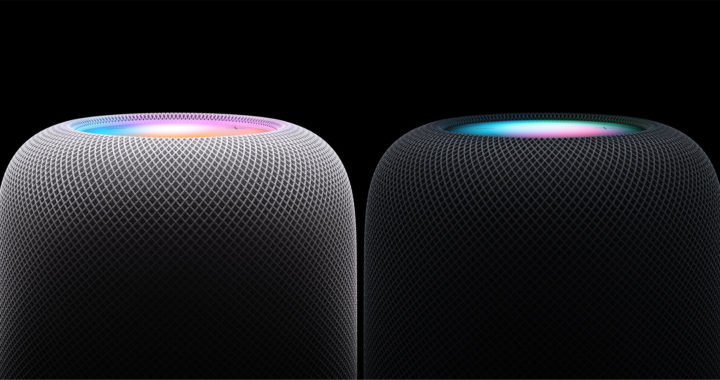There is an obvious attempt for Apple to claim the consumer audio market and the more specific smart speaker market when it introduced the first generation of the Apple HomePod in 2018 and the HomePod Mini in 2020. The arrival of the second-generation HomePod or HomePod 2 in 2023 demonstrated further this attempt.
Pros of Apple HomePod (2nd Gen): Reasons Why You Should Buy
It is interesting to note that the second take on the HomePod does not steer far from the original. The first-gen and second-gen HomePod smart speakers are nearly identical. Both have the same look and feel. But the latter is better all around.
The second-generation smart speaker from Apple is more of a redo than an iteration. The company revisited the problems of the previous generation. The first HomePod was a massive flop because of its high price tag and some notable quirks
Nevertheless, considering its six years of development time, the newer smart speaker corrected the issues with its older sibling and provide newer features and upgrades in terms of sound quality, capabilities, and even its pricing.
Below are the specific selling points and advantages of this smart speaker from Apple:
• Decent Overall Sound Quality: This device is an omnidirectional speaker that delivers loud and clear sound in a 360-degree direction to support Dolby Atmos and Spatial Audio. It has 5 tweeters and a single 4-inch woofer.
• Straightforward to Set Up and Use: A notable advantage of the HomePod is that the setup process takes only a few moments. It pairs well with an iPhone. The user interface and user experience also adhere to the upfront philosophy of Apple.
• Well-Rounded Smart Device: The device can be integrated into a smart home system and control other smart devices through Siri voice commands. The device and connected smart devices can also be controlled using an iPhone or iPad.
• Supports Matter and HomeKit: Matter is a new smart home standard that makes a smart device compatible with other devices that support the same standard. The HomePod can control Matter devices via the Apple HomeKit framework.
• Connectivity and Sensor Features: It comes equipped with Wi-Fi 802.11n with MIMO, Bluetooth 5, mesh networking via Thread, and the Apple U1 ultra-wideband, as an accelerometer, humidity and temperature sensors, and 4 microphones.
Cons of Apple HomePod (2nd Gen): Reasons Why You Should Not Buy
The second-generation Apple HomePod retails for USD 299.00. Of course, considering the pricing strategy of Apple and how it positions its products, it is an expensive smart speaker. There are other less expensive alternatives in the market.
For example, the second-gen One Sonos is a capable smart speaker priced at around USD 219.00. This device provides voice assistant from Amazon Alexa and Google Assistant. The base model of the fourth-gen Amazon Echo, a device that looks similar to the HomePod Mini, retails for USD 99.99 while the Google Nest Audio is priced the same.
It is also important to note that the HomePod is tied to the Apple product ecosystem. Potential customers must be aware of this before purchasing. The entire ecosystem is notorious for its cross-platform compatibility and usability issues.
Below are the specific issues and disadvantages of this smart speaker from Apple:
• Sound Quality Could Be Better: The sound quality might be decent but it is not the best. There is too much bass but the speaker struggles to produce clear sounds in the mid-range and defined sounds in the high-range.
• No High-Res Lossless Support: Note that Apple has developed a high-resolution and lossless audio format called the ALAC format for its Apple Music streaming service. This smart speaker does not support over 24-bit/48kHz audio.
• Lack of Certain Audio Drivers: Another one of the notable issues of the second-gen HomePod is the absence of certain drivers for audio. It works well with Apple Music but it is less compatible with Spotify, YouTube Music, and Amazon Music.
• Other Notable Compatibility Issues: Android users or non-Apple users are better off purchasing another smart speaker. It is also worth noting that the second-gen HomePod cannot be paired with its first-generation older sibling.
• Limitations of Siri as a Voice Assistant: Siri can answer basic questions but it is not as helpful as Amazon Alexa and Google Assistant. It also supports only a limited number of languages. Voice recognition capabilities are not as polished.
Verdict: The Major Pros and Cons of the Second-Gen Apple HomePod
The second-gen Apple HomePod looks similar to the first-gen HomePod. However, considering the problems of its older sibling, this newer smart speaker has notable improvements in terms of sound quality and overall features and functionalities.
Sound quality is decent. Most users would find it good enough. However, when compared to other and less expensive smart speakers in the market, it could have been better. This device is also unsuitable for users who are not tied to the infamous Apple ecosystem.





